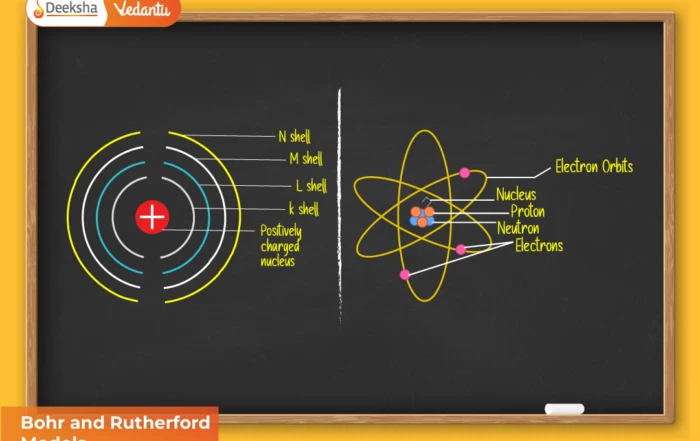The nomenclature of elements with atomic numbers greater than 100—commonly called superheavy or transactinide elements—follows a precise standard created by the International Union of Pure and Applied Chemistry (IUPAC). These elements do not occur naturally and must be synthesized artificially using sophisticated particle accelerators. Since they exist for extremely short periods, often less than fractions of a second, and since multiple laboratories frequently claim discovery at the same time, disputes regarding naming rights were common.
To settle these disputes and ensure a universal, unbiased system, IUPAC developed a systematic nomenclature that provides temporary names and symbols to newly discovered elements until their discovery is verified and approved. This system ensures that researchers worldwide have a consistent way to refer to these elements even before their final, permanent names are assigned.
Why Systematic Naming Became Necessary
The discovery of elements beyond atomic number 100 sparked significant interest in nuclear chemistry. However, the limited stability of these elements—often produced atom by atom—made confirmation difficult. As different research groups began announcing claims for new elements, disagreements arose about which discovery was valid and who had naming rights. Traditionally, the privilege of naming went to the discoverer, but when multiple claims overlapped or evidence was incomplete, confusion followed.
IUPAC therefore introduced a temporary naming system rooted entirely in the atomic number. This approach eliminated ambiguity and ensured that even if a discovery was uncertain, the element would still have a recognizable, systematic name.
IUPAC Systematic Naming Rules for Elements with Z > 100
IUPAC assigns temporary names to newly synthesized elements using a rule-based system built from numerical roots. Each digit of the atomic number is replaced by a corresponding Latin-derived root. These roots form the base of the temporary name.
IUPAC Numerical Roots for Systematic Element Names
| Digit | Name | Abbreviation |
| 0 | nil | n |
| 1 | un | u |
| 2 | bi | b |
| 3 | tri | t |
| 4 | quad | q |
| 5 | pent | p |
| 6 | hex | h |
| 7 | sept | s |
| 8 | oct | o |
| 9 | enn | e |
These roots are placed in order according to the digits of the atomic number. The rules for forming the final name include:
- The combined roots must end with -ium.
- If two identical letters appear together (e.g., “nn”), one is removed for pronunciation ease.
- The symbol of the element consists of the first letter of each root, written with an initial capital letter.
Example 1: Element 110
- Digits: 1 – 1 – 0
- Roots: un – un – nil
- Name: ununilium
- Symbol: Uun
Example 2: Element 118
- Digits: 1 – 1 – 8
- Roots: un – un – oct
- Name: ununoctium
- Symbol: Uuo
These systematic names serve as placeholders until the final names are formally approved.
Nomenclature of Elements with Atomic Numbers Above 100
The table below lists the temporary IUPAC names, symbols, and the permanently adopted names and symbols for superheavy elements.
| Atomic Number | Temporary IUPAC Name | Symbol | Official IUPAC Name | IUPAC Symbol |
| 102 | Unnilbium | Unb | Nobelium | No |
| 103 | Unniltrium | Unt | Lawrencium | Lr |
| 104 | Unnilquadium | Unq | Rutherfordium | Rf |
| 105 | Unnilpentium | Unp | Dubnium | Db |
| 106 | Unnilhexium | Unh | Seaborgium | Sg |
| 107 | Unnilseptium | Uns | Bohrium | Bh |
| 108 | Unniloctium | Uno | Hassium | Hs |
| 109 | Unnilennium | Une | Meitnerium | Mt |
| 110 | Ununnilium | Uun | Darmstadtium | Ds |
| 111 | Unununium | Uuu | Roentgenium | Rg |
| 112 | Ununbium | Uub | Copernicium | Cn |
| 113 | Ununtrium | Uut | Nihonium | Nh |
| 114 | Ununquadium | Uuq | Flerovium | Fl |
| 115 | Ununpentium | Uup | Moscovium | Mc |
| 116 | Ununhexium | Uuh | Livermorium | Lv |
| 117 | Ununseptium | Uus | Tennessine | Ts |
| 118 | Ununoctium | Uuo | Oganesson | Og |
How Permanent Names Are Assigned
Once an element’s discovery is officially confirmed—which may take years due to the difficulty of synthesizing and detecting superheavy atoms—IUPAC asks the discoverers to propose a permanent name. After evaluation and approval, the chosen name may reflect one of the following:
- A renowned scientist (e.g., Seaborgium named after Glenn Seaborg).
- A geographical location (e.g., Darmstadtium from Darmstadt, Germany).
- A research institution (e.g., Dubnium for Dubna).
- Important scientific concepts or mythological references.
The final name must end with -ium, except for certain categories where alternate endings may apply, as seen with Tennessine or Oganesson.
Importance of the IUPAC Naming System
This structured naming process ensures clarity and fairness in global scientific communication. With many laboratories worldwide working on nuclear synthesis, a consistent system prevents duplication, confusion, and political disputes. It also preserves a historical record of scientific achievements and discoveries.
FAQs
Q1. Why do elements above atomic number 100 require systematic temporary names?
Because their discoveries are often complex and disputed, temporary names provide accuracy and consistency until the discovery is verified.
Q2. Who approves the official permanent name of a superheavy element?
Permanent names are approved by the International Union of Pure and Applied Chemistry (IUPAC) through a global voting and review process.
Q3. Why are superheavy elements so difficult to study?
They are extremely unstable, often existing for microseconds, which makes detection, measurement, and chemical analysis challenging.
Q4. How are temporary symbols for these elements created?
The temporary symbol is formed by taking the first letter of each numerical root used in forming the temporary name.
Q5. How many superheavy elements currently have official IUPAC names?
All elements up to atomic number 118 now have officially approved names and symbols.
Conclusion
The nomenclature of elements with atomic numbers greater than 100 showcases the scientific precision and international cooperation essential in modern chemistry. Through IUPAC’s systematic naming rules, each newly discovered element receives a clear and standardized temporary identity. This ensures global consistency while discoveries undergo verification. When a discovery is confirmed, the permanent name honors scientific contributions, historical significance, or influential researchers. As scientists continue to explore the boundaries of nuclear chemistry, the IUPAC system will remain vital in maintaining order, clarity, and universal understanding across the expanding periodic table.











Get Social